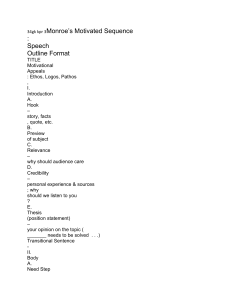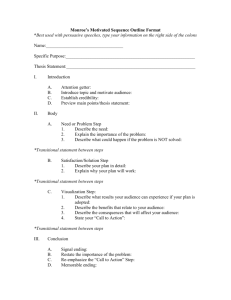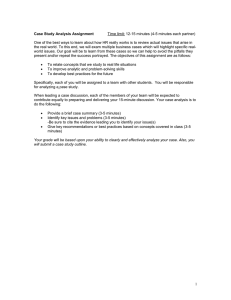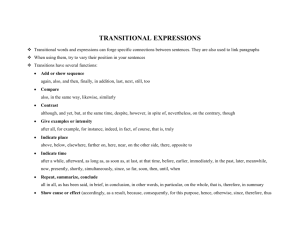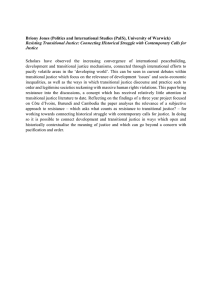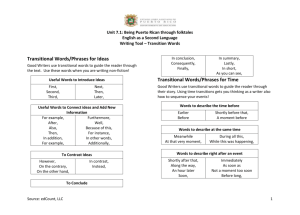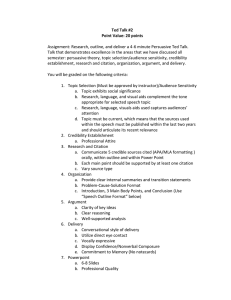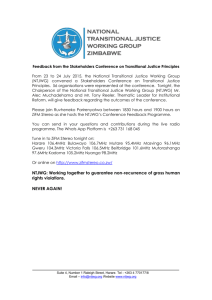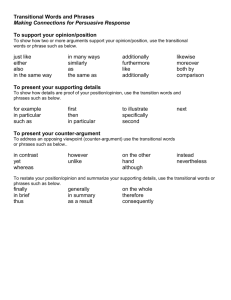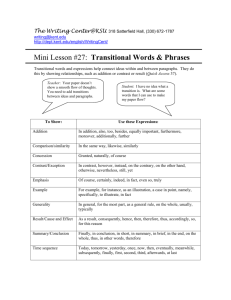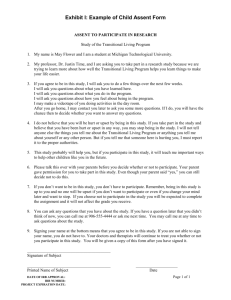Monroe's Motivated Sequence: Outline Format
advertisement
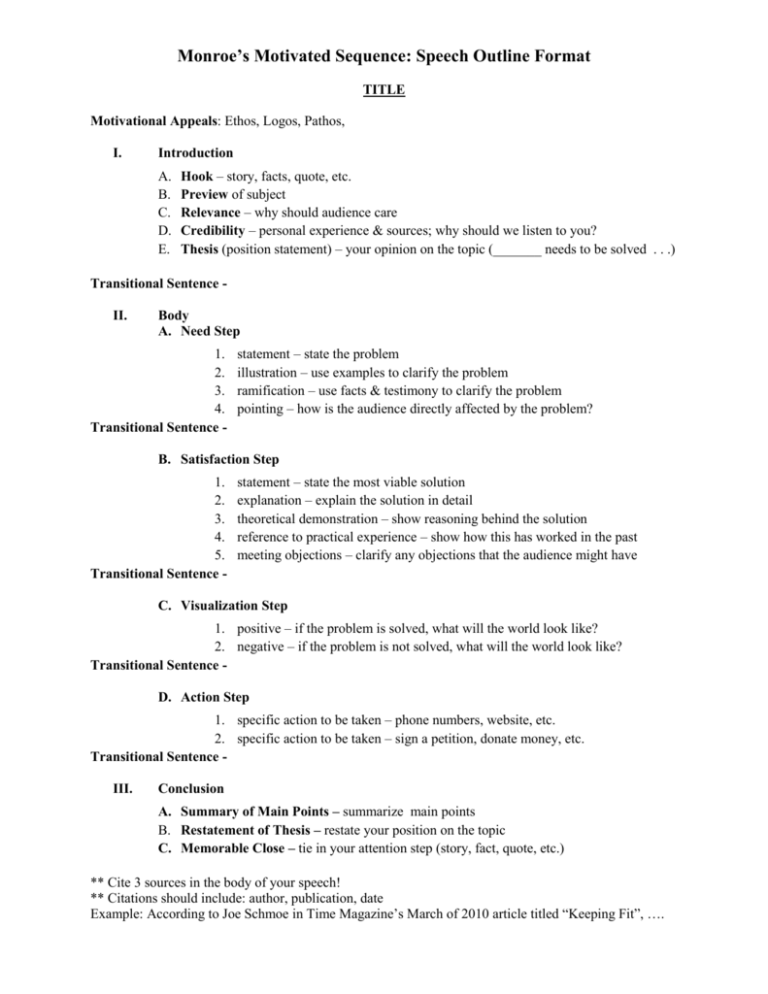
Monroe’s Motivated Sequence: Speech Outline Format TITLE Motivational Appeals: Ethos, Logos, Pathos, I. Introduction A. B. C. D. E. Hook – story, facts, quote, etc. Preview of subject Relevance – why should audience care Credibility – personal experience & sources; why should we listen to you? Thesis (position statement) – your opinion on the topic (_______ needs to be solved . . .) Transitional Sentence II. Body A. Need Step 1. 2. 3. 4. Transitional Sentence - statement – state the problem illustration – use examples to clarify the problem ramification – use facts & testimony to clarify the problem pointing – how is the audience directly affected by the problem? B. Satisfaction Step 1. 2. 3. 4. 5. Transitional Sentence - statement – state the most viable solution explanation – explain the solution in detail theoretical demonstration – show reasoning behind the solution reference to practical experience – show how this has worked in the past meeting objections – clarify any objections that the audience might have C. Visualization Step 1. positive – if the problem is solved, what will the world look like? 2. negative – if the problem is not solved, what will the world look like? Transitional Sentence D. Action Step 1. specific action to be taken – phone numbers, website, etc. 2. specific action to be taken – sign a petition, donate money, etc. Transitional Sentence III. Conclusion A. Summary of Main Points – summarize main points B. Restatement of Thesis – restate your position on the topic C. Memorable Close – tie in your attention step (story, fact, quote, etc.) ** Cite 3 sources in the body of your speech! ** Citations should include: author, publication, date Example: According to Joe Schmoe in Time Magazine’s March of 2010 article titled “Keeping Fit”, ….
